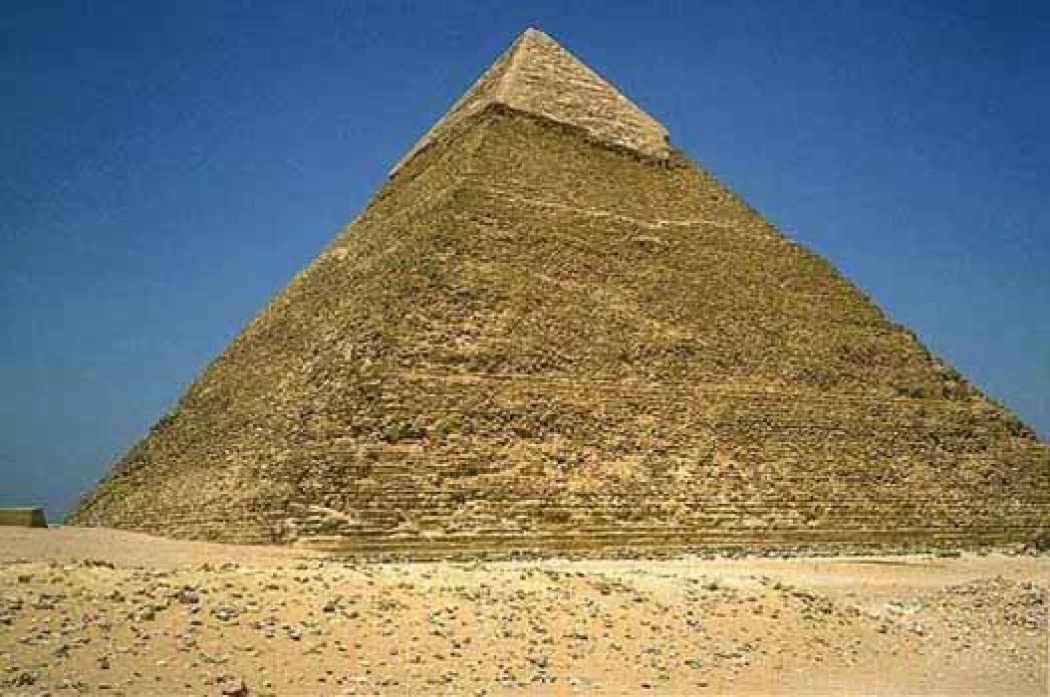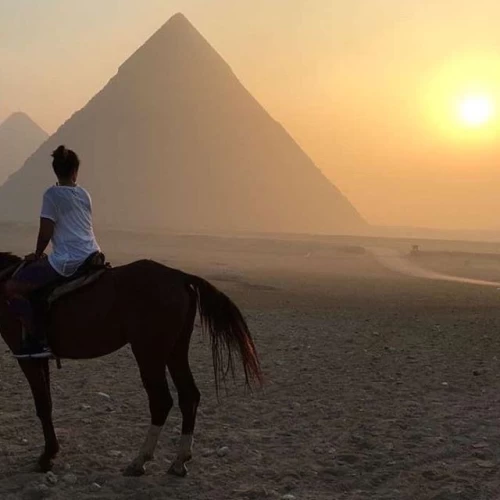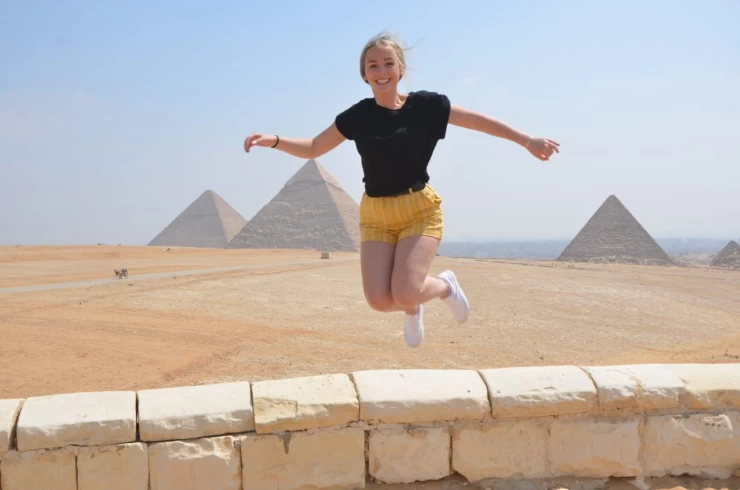
King Cheops owner of the Great pyramid
Khufu, also known as Cheops, was the second pharaoh of the Fourth Dynasty during the first half of the Old Kingdom period (26th century BC). He died around 2566 BC. Khufu succeeded his father, Sneferu, as king. He is widely acknowledged to have commissioned the Great Pyramid of Giza, one of the Seven Wonders of the Ancient World, although many other features of his reign are inadequately documented.
The only totally preserved portrait of the king is a tiny ivory figurine discovered in a later-period temple ruin at Abydos in 1903. All other reliefs and statues were unearthed in fragments, and many Khufu buildings have been gone. Everything we know about Khufu comes from inscriptions in his necropolis at Giza and later writings.[citation needed] For example, Khufu is the prominent character mentioned in the Westcar Papyrus from the 13th dynasty.
The majority of writings on King Khufu were recorded by ancient Egyptian and Greek historians around 300 BC.[citation needed]. Khufu's obituary is portrayed in a contradictory manner: while the monarch enjoyed long-term cultural heritage preservation over the Old and New Kingdom periods, the ancient historians Manetho, Diodorus, and Herodotus paint a very bad picture of Khufu's character. As a result, an uncertain and critical portrayal of Khufu's personality persists.
Khufu's name was given to the god Khnum, which may indicate a rise in Khnum's popularity and religious significance. Various royal and religious titles adopted around this time may indicate that Egyptian pharaohs attempted to emphasize their divine origin and status by dedicating their cartouche names (official royal names) to certain deities. Khufu may have seen himself as a heavenly creator, a role already assigned to Khnum, the god of creation and expansion. As a result, the monarch united Khnum's name to his own. Khufu's full name (Khnum-Khufu) translates as "Khnum protect me While contemporary Egyptological pronunciation gives his name as Khufu,
The pharaoh officially used two versions of his birth name: Khnum-Khufu and Khufu. The first (complete) version exhibits Khufu's religious loyalty to Khnum, but the second (shorter) version does not. It is unknown as to why the king would use a shortened name version since it hides the name of Khnum and the king's name connection to this god. It might be possible though, that the short name was not meant to be connected to any god at all
Khufu is also known as Χέoψ, Khéops, or Cheops by Diodorus and Herodotus) and Σοῦφις Josephus used the unusual variant of Khufu's name, Σόφε, (The pronunciations listed here are for English; the pronunciations in Ancient Greek were different.) Arab historians wrote mystic myths about Khufu and the Giza pyramids.
The royal family of Khufu was fairly extensive. It is uncertain whether Khufu was Sneferu's biological son. Egyptologists believe Sneferu was Khufu's father, but only because later historians established that the eldest son or a chosen descendant would inherit the throne.[9] In 1925, the tomb of Queen Hetepheres I, G 7000x, was discovered east of Khufu's pyramid.
It included several valuable grave goods, and several inscriptions gave her the title Mut-nest (meaning "mother of a king"), as well as the name of King Sneferu. Initially, it appeared that Hetepheres was Sneferu's wife and that they were Khufu's parents. More recently, however, some have questioned this theory because Hetepheres is not known to have had the title Hemet-nest (meaning "king's wife"), which is required to authenticate a queen's royal rank.
Instead of the spouse's title, Hetepheres was given the title Sat- netjer- khetef (verbatim: "daughter of his divine body"; symbolically: "king's bodily daughter"), which was used for the first time. As a result, researchers believe Khufu was not Sneferu's biological son, but rather that Sneferu legitimized Khufu's rank and familial standing through marriage. Khufu established his new title by apotheosizing his mother as the daughter of a living deity. This notion may be reinforced by the fact that Khufu's mother was buried next to her son rather than in her husband's necropolis, as was expected.
At present, the Great Pyramid stands as an assurance of Khufu's vision and the ingenuity of the ancient Egyptian civilization. Whether it is divine supremacy or a human marvel, such grandiosity and mysterious features in this grand work draw millions of people who marvel at its bared beauty and the secrets it keeps within.
Although the reign of King Khufu ended over 4,500 years ago, his very shadow is felt through time and ensures that he remains one of the most enigmatic and most ambitious rulers of ancient Egypt.
Contrary to his gigantic pyramid, not much is known about the personality of Khufu. His ruling has been reported in varied ancient sources: while some describe him as a stern and despotic king, others report him as a just and god-fearing leader. The only extant life-size statue of Khufu, carved in ivory, has been discovered from Abydos and serves as rare evidence of the appearance of this ruler.
It can be so difficult to imagine such an immense structure; the fact that the whole of London's parliament and Saint Paul's Cathedral could be contained there comfortably may perhaps help you get an idea.
Napoleon Bonaparte, the passionate admirer of Egyptian antiquities, was so impressed by his visit to the plateau of Giza that (thanks to the help of his mathematicians) he was able to officially announce that in the three pyramids, there was enough stone to build a three-meter-high wall that surrounded the whole territory of France.
The Great Pyramid is, among all, the one aligned most precisely. It is clear that the orientation had to be very important for engineers and supervisors. However, we do not know for sure if such precision was a practical response to the Bent Pyramid in Dahshur and Meidum accidents, or if at the base there was simply a religious need that made it necessary to align the funeral chamber (and consequently the body of the deceased pharaoh).
Here, Cheops was to be buried for eternity in his Aswan red granite sarcophagus. However, some Egyptologists believe that all three rooms were part of the original plan; in particular, the "Queen's Chamber" would have served as a serdab room, in which a statue of the late pharaoh was to serve as a substitute for his body. Five rooms were built above the "King's Chamber" to lighten the structure, an innovation that served to distribute the load of the pyramid that would otherwise have overloaded the ceiling of the burial chamber. Without worrying about understanding the key terms of Egyptian history, we will see an Egyptologist guide, who will meet your expectations.


















